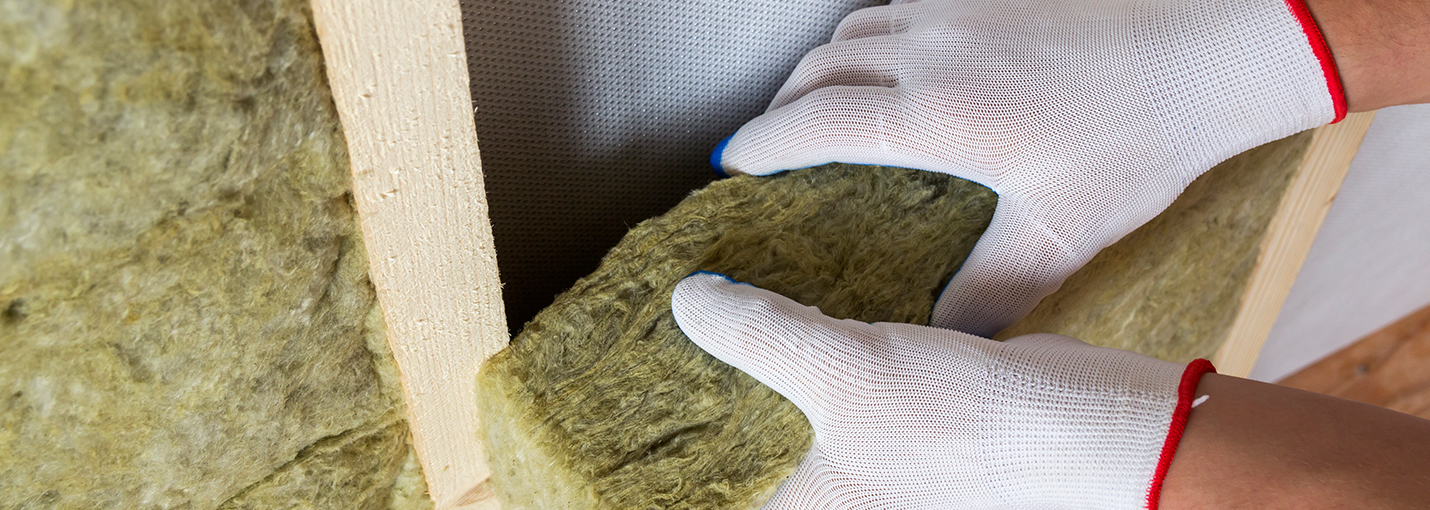Removing asbestos from your property is vital, but when doing asbestos abatement work, use a professional to minimize risks.
For many American homeowners, asbestos abatement is a matter of practical necessity. Asbestos-containing materials may pose little risk when they are kept inaccessible—trapped behind walls, or left underneath floors—but any disturbance could unsettle friable fibers, endangering the health and well-being of entire families.
!
Si cree que estuvo expuesto al asbesto, incluso cuando era niño, hable con un proveedor de atención médica sobre pruebas y exámenes para ayudar a diagnosticar cicatrices pulmonares y detectar enfermedades relacionadas con enfermedades relacionadas con el asbesto.
However, asbestos abatement can be expensive, time-consuming work. Many homeowners try to save money by removing suspected asbestos-based products alone, without oversight or professional assistance.
While few states restrict the right of property owners to conduct routine maintenance, the long-term health effects of handling asbestos—even in small quantities—is not always worth the savings.
  |
| Casi todos los edificios construidos antes de mediados de la década de 1980 contenían productos y materiales de construcción de asbesto. |
  |
Asbesto en los hogares estadounidenses
Asbestos was once used to fabricate a wide range of construction materials and consumer products. Both in the United States and in countries around the world, asbestos had a reputation as a “mineral milagroso.” It was versatile, inexpensive, and had near-unparalleled industrial potential.
However, asbestos’s reign—while long-lived—came to an abrupt end in the late 20° siglo XX.
Today, we know that asbestos, for its all its many applications, is anything but safe. It is, instead, a potent toxin and known human carcinogen, capable of causing medical conditions incluido el cáncer.
“Todas las formas de asbesto son cancerígenas para los humanos”. 1
The United States began restricting authorized uses of asbestos as in the early 1970s. The Environmental Protection Agency eventually tried to ban asbestos outright in 1989, but its decision was overturned, in part, by a circuit court.
While the E.P.A.’s asbestos ban failed, increased regulation crippled the asbestos industry and put an end to its longstanding lies. But asbestos companies—many driven to bankruptcy—were never ordered to recall their products, nor were they compelled to abate infected properties.
According to some reports, an estimated 30 million American homes still contain significant, and potentially life-threatening, concentrations of asbestos fiber.
El asbesto no tiene sabor ni olor.
Es posible que no sepa que lo está respirando.


“La evidencia general sugiere que no existe un nivel seguro de exposición al asbesto”. no hay nivel seguro de exposición al asbesto."Fuente: Instituto Nacional del Cáncer (NIH)2 |
“Algunas fibras de asbesto pueden pasar por alto... las defensas naturales de su cuerpo... y alojarse en lo profundo de sus pulmones. Esas fibras pueden permanecer en su lugar durante mucho tiempo y es posible que nunca se eliminen”.Fuente: Asociación Americana del Pulmón |
Los riesgos para la salud de la exposición al asbesto pueden incluir:
| Mesotelioma: Cáncer del mesotelio, la capa delgada de tejido que rodea los órganos del cuerpo. Solo se sabe que este cáncer es causado por la exposición al asbesto. | Cáncer de pulmón |
| Cáncer de laringe: Cáncer de laringe (sección de la garganta llamada laringe) | Cáncer de ovarios |
| Cáncer de estómago | Cáncer de colón |
| Cáncer de faringe | La Asbestosis: una enfermedad pulmonar crónica asociada a la exposición al asbesto |
| Enfermedad Pulmonar Obstructiva Crónica (EPOC) | Atelectasia (collapsed lung) |
| Derrame pleural (acumulación de líquido alrededor de los pulmones) | Derrame pericárdico (acumulación de líquido alrededor del corazón) |
Asbestos and the Risk of Life-Altering Illness
Even today, decades after the E.P.A. enacted its first ban, asbestos remains a common and borderline unavoidable hazard. Everyone—young, old, rich, and poor—has either been exposed to asbestos, or will eventually be exposed to asbestos.
Un type of naturally-occurring mineral, asbestos can be found across the United States, with significant deposits scattered throughout Montana, California, and the Appalachian Mountains.
“Por lo general, quienes desarrollan enfermedades relacionadas con el asbesto no muestran signos de enfermedad durante mucho tiempo después de la exposición”.Fuente: Instituto Nacional del Cáncer (NIH)3 |
In many towns and cities, low levels of asbestos are present in the environment.
Sin embargo, environmental asbestos exposure—while still dangerous—is rarely sufficient to induce illness. Most people who have been diagnosed with asbestos-related conditions are, instead, either those who worked in the asbestos industry or those who shared a living space with former asbestos workers.
Asbestos exposure, no matter its route, is never safe. It is associated with illnesses including, but not limited to, the following:
The latency of asbestos-related diseases
Symptoms of asbestos diseases can take 20-50 years to appear after exposure.
Asbestos-related illnesses are somewhat insidious, insofar as they have unusually long latency periods. A latency period, or latent period, refers to the time between exposure to an illness-causing agent and the emergence of noticeable symptoms.
Since asbestos-related conditions like asbestosis and mesothelioma have latency periods best measured in decades, many people—especially people who once worked with or around asbestos—never know that their body is harboring a potentially life-threatening illness until they are diagnosed and told that they have only years left to live.
¿Califica usted para una compensación?
Descubra rápida y fácilmente cómo estuvo expuesto buscando en WARD, la base de datos de asbesto más grande del planeta.
BÚSQUEDA GRATUITA >When Asbestos Abatement is Unavoidable
The risks of asbestos are manifold.
However, identifying asbestos-containing materials can be challenging, even for professionals with special training, certification, and laboratory-grade equipment. Many asbestos-based products are visibly indistinguishable from their non-asbestos-based counterparts, with differences observable only on the microscopic level.
“Por lo general, quienes desarrollan enfermedades relacionadas con el asbesto no muestran signos de enfermedad durante mucho tiempo después de la exposición”.Fuente: Instituto Nacional del Cáncer (NIH)4 |


Homeowners have several options to confirm the presence of asbestos.
Options to determine the presence of asbestos include:
• Self-test kits for clothing and other products
If a test indicates that a product is likely asbestos-contaminated, property owners do not necessarily need to panic.
While asbestos can be incredibly dangerous, it poses little threat to human health if it is kept inaccessible. However, asbestos that has degraded, or become friable, may need to be removed if it is more likely than not to become aerosolized and spread into regularly occupied spaces.
You may need to consider asbestos abatement if:
• You have received a positive result from an asbestos test.
• You have friable asbestos-containing materials in publicly-accessible spaces or proximal to climate control ducts and vents.
• You are planning to sell your home and wish to minimize your legal liability for potential asbestos-related injuries.
“La evidencia general sugiere que no existe un nivel seguro de exposición al asbesto”. no hay nivel seguro de exposición al asbesto."Fuente: Instituto Nacional del Cáncer (NIH)5 |
The Asbestos Removal Process
Asbestos removal, or abatement, should only be undertaken by trained professionals. While every property is different, asbestos abatement companies typically employ either of the following strategies to mitigate asbestos-related hazards:
Encapsulation
Asbestos encapsulation is typically considered a cost-effective alternative to asbestos removal.
During the encapsulation process, the asbestos abatement company will cover any asbestos-containing products with a special sealant. This sealant traps asbestos fibers inside of an adhesive matrix, preventing the local spread of aerosolized asbestos.
Más de $ 30 mil millones todavía están disponibles (sin demandas. Sin tarifas a menos que reciba dinero. Sin riesgos). Haga su reclamo.   |
Eliminación
Asbestos removal can be time-consuming, but it is sometimes a matter of practical necessity.
During a removal, asbestos abatement professionals usually take measures including, but not limited to, the following:
1. The part of the property containing asbestos may be sealed off from the rest of the home using plastic sheeting or another barrier.
2. The asbestos abatement company will place air filters inside of the asbestos-affected area. Ducts will be installed outside to extricate and separate aerosolized fiber.
3. Once abatement work begins, non-essential personnel will not be allowed to access the asbestos-contaminated space.
4. During abatement, the company may perform periodic air tests to ensure that environmental asbestos levels remain safe and stable.
5. After asbestos removal has finished, the asbestos-containing materials will be placed inside sealable bags or containers and transported to an authorized asbestos landfill or authorized asbestos recycling center.
“Algunas fibras de asbesto pueden pasar por alto... las defensas naturales de su cuerpo... y alojarse en lo profundo de sus pulmones. Esas fibras pueden permanecer en su lugar durante mucho tiempo y es posible que nunca se eliminen”.Fuente: Asociación Americana del Pulmón |
Staying Safe Around Asbestos
Homeowners should never handle asbestos-containing materials.
However, even if unadvisable, few—if any—states explicitly prohibit individuals from testing, collecting, and safely disposing of asbestos-contaminated products.
If you, or a loved one, elect to remove asbestos-containing materials from a property without professional assistance, you should protect your health by taking the following steps:
1. Isolating the suspected asbestos-containing materials.
2. Purchasing and wearing a tight-fitting respirator, gloves, and disposable work clothes.
3. Using water or a surfactant, spray the suspected asbestos to limit aerosolization.
4. Collect the asbestos-based product and place it into an airtight, sealable container.
5. Before leaving the workspace, remove your disposable clothes and immediately shower, taking care not to track any asbestos into the home.
Los fumadores expuestos al asbesto tienen hasta 50 veces más probabilidades de desarrollar cáncer de pulmón que los no fumadores que no están expuestos.3 |
Using a professional for asbestos removal
Asbestos should always be taken to an E.P.A.-authorized landfill or a certified recycling center.
While few states prohibit unassisted asbestos abatement, many penalize homeowners who dispose of asbestos-based products on private or public property. Burying or burning asbestos is against the law in many states; offenders could be fined thousands of dollars.
AsbestosClaims.Law
En AsbestosClaims.Law, nuestra misión de asegurar una compensación para las víctimas del asbesto es más que profesional;es personal.
Nuestro fundador, Justinian C. Lane, conoce de primera mano los efectos devastadores del asbesto.
Tanto sus abuelos como su padre, todos trabajadores del asbesto, fallecieron de cánceres inducidos por el asbesto sin darse cuenta de su elegibilidad para juicios por asbesto u otras formas de compensación.
Nuestro objetivo es evitar tales trágicos descuidos informando y guiando a las víctimas y sus familias a través de sus opciones legales.
Si usted o sus seres queridos han sufrido como resultado de la exposición al asbesto, podría ser elegible para una compensación considerable. Estos fondos podrían cubrir tratamientos médicos, servicios de remoción de asbestos y salvaguardar su salud.
Además, los fideicomisos de asbesto ofrecen una compensación sin necesidad de un juicio, brindando un camino más rápido y sencillo hacia la justicia.
Comuníquese con nosotros en [email protected] o (206) 455-9190 para obtener ayuda con su reclamo. Ofrecemos escucha compasiva, explicaciones claras y no cobramos un centavo a menos que ganemos su caso.
Más allá de las demandas legales, también asesoramos sobre discapacidad de veteranos, seguridad social y protección laboral como compensación de trabajadores, FELA, y La ley de Jones para trabajadores marítimos.
No hay riesgo ni costo para conectarse con nuestro equipo experimentado sobre sus derechos. Nuestro compromiso con su bienestar significa que no cobramos honorarios a menos que reciba una compensación.
| Para más consultas o inquietudes sobre el asbesto, explore nuestro sitio web y página de YouTube, con infografías, videos y respuestas a preguntas comunes sobre temas relacionados con el asbesto. |
También presentamos WARD, la base de datos de investigación mundial sobre el asbesto. Es el recurso más completo de información relacionada con el asbesto.
WARD ayuda a identificar posibles escenarios de exposición, productos que contienen asbesto y puede indicar los tipos y posibles montos de compensación que puede tener derecho a recibir.
No te demores — ponerse en contacto Con nosotras hoy!
1 IARC Working Group on the Evaluation of Carcinogenic Risks to Humans. Arsenic, metals, fibres, and dusts. IARC Monographs on the Evaluation of Carcinogenic Risks to Humans. 2012 ;100(Pt C):11-465. PMID: 23189751.
2 Instituto Nacional del Cáncer (NIH), Hoja informativa sobre asbesto.
3 Instituto Nacional del Cáncer (NIH) Hoja informativa sobre asbesto.
4 Instituto Nacional del Cáncer (NIH), Hoja informativa sobre asbesto.
5 National Cancer Institute (NIH), Hoja informativa sobre asbesto.
6 Klebe, S., Leigh, J., Henderson, D.W. and Nurminen, M., 2020. Asbesto, tabaquismo y cáncer de pulmón: una actualización. Revista internacional de investigación ambiental y salud pública, 17(1), p.258.




